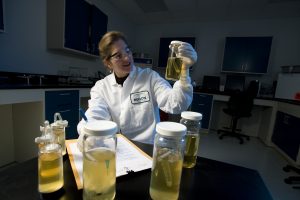“The radiation sterilization AAMI committee is offering a great opportunity for manufacturers to communicate their real-life needs – and we want to hear from you! We are trying to gather data on the use of the VDmax method in the manufacturing arena. Your participation will allow us to assess current requirements and provide better guidance moving forward. If you have any questions, please do not hesitate to contact us.” – Dr. Wendy Wangsgard
AAMI Survey on the Use of and Experiences with Method VDmax – Details
The AAMI committee ST/WG 02 Radiation Sterilization would like to request the completion of this survey on the Use and Experiences with Method VDmax. Please complete the survey by 2018-09-19 using this link: https://www.surveymonkey.com/r/VDmax. Feel free to send it to others outside of the committee to complete. Thanks in advance for your participation.

Method VDmax for the substantiation of a 25-kGy sterilization dose was first described in 1999. Subsequently, Method VDmax was extended to the substantiation of a range of sterilization doses from 15 to 35 kGy in 2.5-kGy increments. It has been approximately 10 years since the last field evaluations of these Methods were performed. Additionally, the publication of ANSI/AAMI/ISO TIR13004:2013 may have led to more companies substantiating sterilization doses other than 25 kGy.
The purpose of this survey is to gather up to date information on the use of Method VDmaxSD and the experiences health care companies have had with the application of this method.
The first particular interest of the survey is the choice of the sterilization dose used in a substantiation exercise. The choice of sterilization dose and the rationale for such a selection might be based on factors such as :
- The difference between the average bioburden and the upper limit associated with the selected sterilization dose;
- Available data on the variation in the numbers and types of microorganisms that comprise the bioburden;
- Available data on the microbiological quality of similar products, including the results of sterilization dose audits;
- The materials comprising the product and the control of the microbiological quality of materials;
- The manufacturing process and associated control and monitoring procedures, particularly steps that affect bioburden or its resistance; and
- The manufacturing environment, particularly the extent of microbiological control and monitoring, and available data on the stability of the manufacturing environment over time.
The second particular interest of the survey is the frequency of use of VDmax25 compared to other substantiation of doses less than or greater than 25 kGy.
The last particular interest of the survey is frequency of failure of dose substantiation exercises at the initially-selected sterilization dose and the frequency of failure of sterilization dose audits. For such failures, questions are asked regarding product physical, manufacturing process, and microbiological attributes. Learnings from any failure investigations are important.
Survey questions are to be answered for each product or product family utilizing the VDmax method for dose verification.


